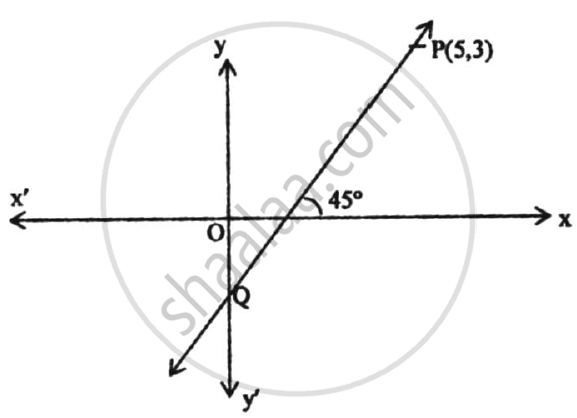Advertisements
Advertisements
प्रश्न
उत्तर
We have to prove that ABCD is a rhombus
Slope of AC = `("y"_2 - "y"_1)/("x"_2 - "x"_1) = (5 - 8)/(0 - 5) = (-3)/(-5) = 3/5`
Slope of BD = `("y"_2 - "y"_1)/("x"_2 - "x"_1) = (9- 4)/(1 - 4) = 5/(-3)`
Thus,Slope of AC x slope of BD = -1
So, the diagnols AC and BC are perpendicular to each other.
Hence,ABCD is a rhombus.
APPEARS IN
संबंधित प्रश्न
The line through P(5, 3) intersects y-axis at Q.
(1) Write the slope of the line.
(2) Write the equation of the line.
(3) Find the coordinates of Q.

Find the slope of the lines passing through the given point.
P (–3, 1) , Q (5, –2)
Determine whether the following point is collinear.
L(2, 5), M(3, 3), N(5, 1)
Determine whether the following point is collinear.
P(2, –5), Q(1, –3), R(–2, 3)
Fill in the blank using correct alternative.
A line makes an angle of 30° with the positive direction of X– axis. So the slope of the line is ______.
Find the slope of a line, correct of two decimals, whose inclination is 50°
Find the slope of a line passing through the given pair of points (9,-2) and (-5,5)
Find the slope of a line having inclination 60°.
Write the equation of a line passing through the point P (0,6) and having slope 6/7.
Find the slope of the line passing through given points G(3, 7) and K(–2, –3).
